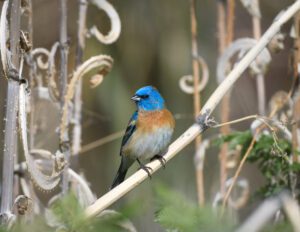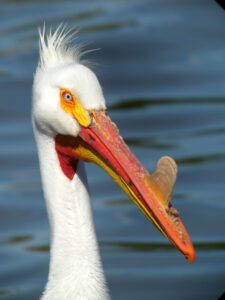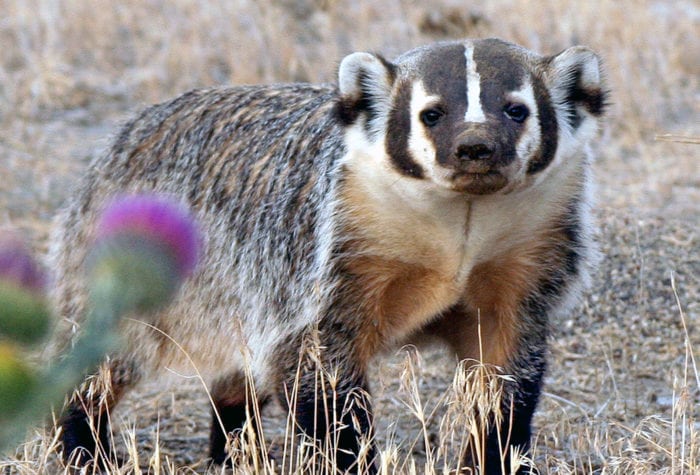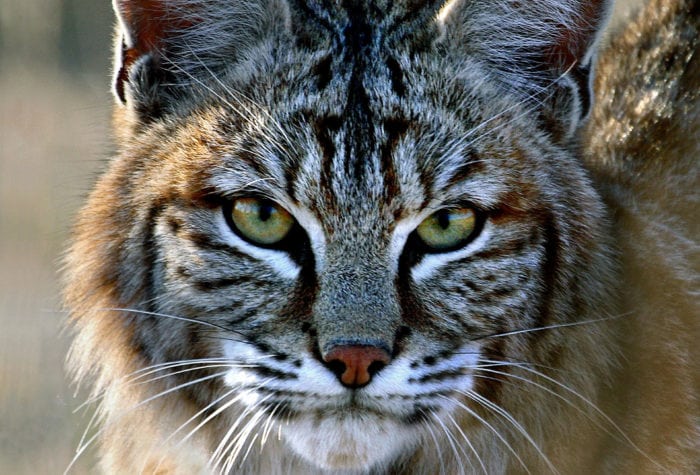Author: Anne White | Published: May 17, 2024 | Category: Species Spotlight
This article originally appeared in The Source Weekly on May 8, 2024.
Oregon’s Owyhee Canyonlands is a seasonal home to rare and spectacular migratory birds.
When one sets out in search of birds in eastern Oregon’s Owyhee Canyonlands, they’re likely on the lookout for the usual suspects: species such as the greater sage-grouse, sagebrush sparrow and golden eagle. The landscape’s vast sagebrush sea provides vitally important expanses of intact habitat for these and other sagebrush dependent species year-round.
But the Owyhee River — a premiere desert waterway with lush, shrubby vegetation along its banks and numerous tumbling tributary streams — beckons many dozens of other raptors, waterbirds and songbirds to this desert oasis during their annual migrations. More than 110 bird species migrate through the region annually. Here are a few of the unlikely species that call the Owyhee Canyonlands home.

Bald eagle
Bald eagles can be found overwintering near the Owyhee River and the Owyhee Reservoir. Here, waterfowl species such as ducks and geese numbering in the thousands offer abundant prey for raptors. Although this population is relatively small — consisting of 20 to 30 birds—bald eagles can be observed along the Lower Owyhee River and in the rugged canyons of the Honeycombs, Owyhee Breaks, Blue Canyon and Slocum Creek wilderness study areas.

American white pelican
With a wingspan measuring an impressive nine feet, the American white pelican is the largest bird in Oregon. During the breeding season, a distinctive semi-circle plate called a caruncle emerges on its upper bill, falling off later in the year. Pelicans can be observed at Cow Lakes, Batch Lake — a shallow pothole lake which was formed by the same lava flows that produced the impressive Jordan Craters lava field — and along the Lower Owyhee River from Leslie Gulch to the Owyhee Reservoir. Pelicans are especially sensitive to disturbance and entire colonies have been known to abandon their nests after a single interaction with humans. If you see pelican during the breeding season (March-May), admire these stalwart birds from a distance.
Passerines
More than 150 species of passerines — or perching songbirds — have been observed in the Owyhee Canyonlands. You can hear the haunting, cascading song of the canyon wren echo among the towering rock formations or the tinkling of the horned lark among the sagebrush (which I liken to a squeaking wheel) year-round. These passerines also include a myriad of neotropical birds — species that migrate to Central and South America in the winter — and migrate through the Owyhee each spring and fall.
One of the earliest birds to arrive in February is Say’s phoebe, a small bird featuring a grey head and wings and a cinnamon belly that nests on the sheltered ledges of cliffs and rimrocks. As a type of flycatcher, Say’s phoebe forages on low-flying insects and has been known to pounce on ground-dwelling insects such as beetles and grasshoppers. Not shy around people, Say’s phoebe can be observed hunting in shrubs and are identifiable by their song which sounds like a slurred whistle followed by a hiccup.
With a vibrant cerulean head and orange breast, the striking plumage of the Lazuli bunting is surely one of the most spectacular and colorful wildlife in the Owyhee Canyonlands. Ornithologist William Rogers Lord waxed eloquently about the vibrant plumage of the bird and its “vivacious, varied, well-articulated and sweet” song, which sounds like a series of squeaky chirps and buzzes. Lazuli buntings are found along the river corridors and brushy areas, such as chokecherry stands, beginning in late April.

A rare migrant to Oregon—so rare that there are only 17 verified sightings in the state—Virginia’s warbler is one of the most unlikely yet exciting birds to occur in the Owyhee Canyonlands. Virginia’s warbler is a small grey bird with a white eye ring and a yellow patch on its chest, and under its tail that its known to “wag.” The last recorded Owyhee observations were of several territorial pairs on the mountain mahogany-covered slopes of Battle Mountain and Twin Buttes in 1998. If you’re lucky enough to find this elusive visitor, keep your binoculars at the ready throughout June.
The Owyhee Canyonlands is a vast, remote landscape teeming with wildlife in every side canyon, creek and plateau. The intrepid birder willing to make the journey to this landscape—and perhaps brave a bit of bushwhacking and scrambling over the rugged terrain—will be rewarded with a bouquet of colorful birds and their sweet songs.
In fact, the Owyhee is an oasis for hundreds and hundreds of wonderful, iconic and sensitive plants and animal species and is among the most unique and critically important landscapes for biodiversity in the West. While its remoteness has long protected Oregon’s Owyhee Canyonlands, development pressures and increasing impacts of climate change have led to an urgent need to protect its irreplaceable ecological resources. Oregon Natural Desert Association is advocating to permanently protect the most ecologically important, culturally significant and awe-inspiring public lands in the Owyhee Canyonlands. Learn more and sign the petition to protect the Owyhee today at protecttheowyhee.org/.
—Anne White is the Wildlands Coordinator at Oregon Natural Desert Association, a nonprofit organization that protects and restores Oregon’s high desert public lands and waters. Read more of her work at onda.org/author/anneonda-org/.


